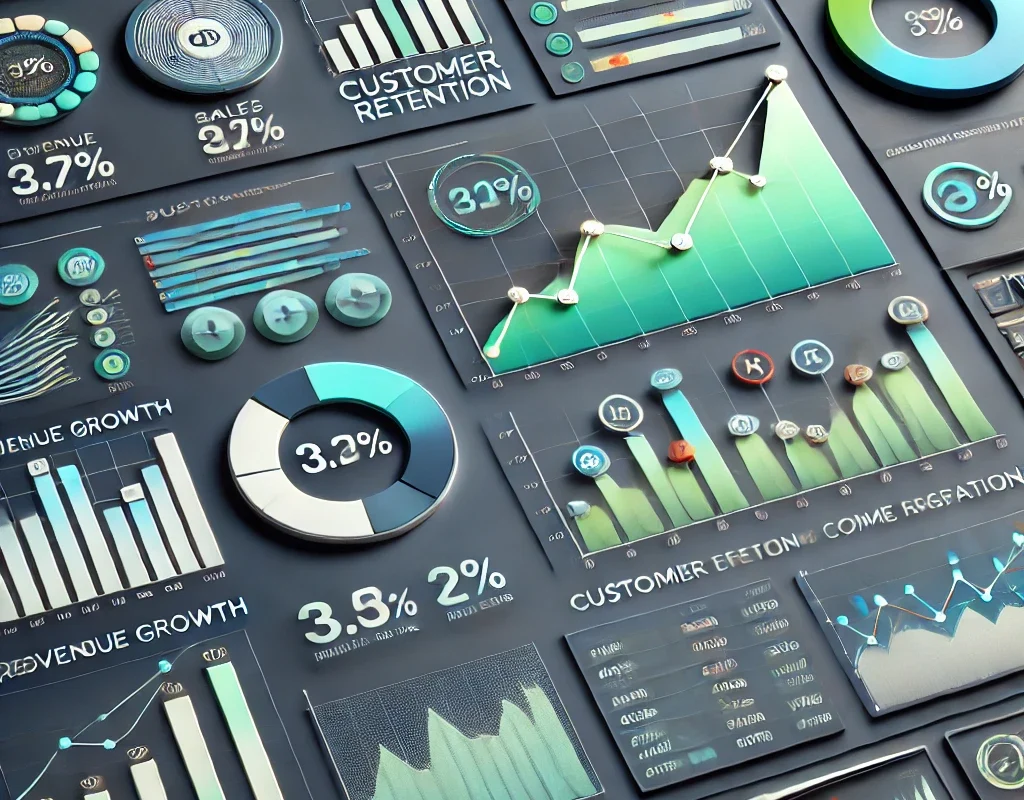In today’s competitive landscape, businesses are increasingly relying on data analytics to drive growth, enhance customer experience, and optimize their operations. Data analytics, when used effectively, can transform raw data into actionable insights, helping companies make informed decisions, identify new opportunities, and mitigate risks. This article will explore the fundamental ways in which businesses can harness the power of data analytics to foster sustainable growth, optimize performance, and stay ahead of the competition.
Data Analytics for Business Growth
Data analytics plays a pivotal role in modern business strategies, offering insights that were previously impossible to uncover. Whether it’s analyzing customer behavior, improving operational efficiency, or forecasting sales trends, the ability to interpret large amounts of data enables businesses to be proactive rather than reactive. Organizations that incorporate data-driven decision-making are more agile and better equipped to adjust to market fluctuations, customer preferences, and competitive pressures.
The relationship between data analytics and business growth lies in the ability to turn raw information into valuable insights. Data-driven organizations can predict market changes, innovate faster, and optimize processes with a higher level of precision, giving them a significant competitive advantage.
Understanding the Types of Data Analytics
To fully utilize data analytics, it’s essential to understand the different types that can be applied in various business contexts:
- Descriptive Analytics: This type focuses on understanding what has happened in the past. It analyzes historical data to identify trends and patterns, providing a foundation for further analysis.
- Diagnostic Analytics: Diagnostic analytics goes beyond the “what” to explain the “why.” It investigates the underlying reasons behind past performance or trends, helping businesses pinpoint problems or opportunities.
- Predictive Analytics: Predictive analytics uses historical data combined with statistical algorithms and machine learning to forecast future events. Businesses use this type of analysis to predict customer behavior, market trends, and even operational risks.
- Prescriptive Analytics: This is the most advanced form of analytics, guiding businesses on what actions to take. Prescriptive analytics recommends solutions to optimize outcomes, often using simulations and machine learning models.
Identifying Business Goals through Analytics
The first step in leveraging data analytics for business growth is to align the analytics process with your specific business goals. Without a clear understanding of what you aim to achieve, your data efforts may lack direction. Whether your goal is to increase sales, improve customer satisfaction, or reduce operational costs, it’s essential to tailor your data collection and analysis methods to support these objectives.
Start by identifying the key performance indicators (KPIs) that are most relevant to your business goals. These KPIs could range from customer acquisition cost (CAC) to revenue growth rate, depending on your business model. With the right KPIs in place, you can use analytics to track progress and make data-driven adjustments to your strategies.
How to Set Up a Data-Driven Culture
Creating a data-driven culture within an organization is critical to ensuring the effective use of analytics. A data-first approach involves integrating analytics into all levels of decision-making. It requires leaders to promote a mindset where data becomes a fundamental part of how decisions are made, rather than relying on intuition or anecdotal evidence.
To establish a data-driven culture, businesses need to invest in training employees to understand and interpret data, implement the right tools and technologies, and foster collaboration across departments. Transparency in data sharing is also essential, as it encourages cross-functional teams to work together to achieve business growth goals.
Leveraging Customer Insights for Growth
Customer analytics is one of the most powerful tools for business growth. By collecting and analyzing data on customer behavior, preferences, and interactions, businesses can gain a deeper understanding of what drives their customers. These insights enable companies to enhance customer experiences, tailor marketing campaigns, and develop products that meet consumer demands.
For example, customer segmentation allows businesses to divide their customer base into distinct groups based on characteristics like buying behavior, demographics, and preferences. This segmentation leads to more targeted marketing strategies, ultimately increasing conversion rates and customer loyalty.
Predictive Analytics for Business Planning
Predictive analytics is a game-changer for businesses seeking to anticipate market trends and consumer behavior. By analyzing past data, predictive models can provide valuable forecasts that guide decision-making. For example, retailers can use predictive analytics to determine demand for certain products during specific seasons, allowing them to manage inventory levels more efficiently.
Businesses can also apply predictive analytics to anticipate risks and take proactive measures to mitigate them. Whether it’s forecasting financial performance, identifying supply chain disruptions, or predicting customer churn, predictive analytics enables companies to make strategic decisions that reduce uncertainty and drive growth.
Using Data Analytics for Personalized Marketing
In today’s digital world, personalized marketing is key to engaging customers and building long-term relationships. Data analytics allows businesses to create highly personalized marketing campaigns by analyzing customer data, such as purchase history, browsing behavior, and social media interactions. By tailoring messages to individual preferences, businesses can improve the effectiveness of their marketing efforts and enhance customer satisfaction.
For instance, e-commerce companies often use data analytics to recommend products based on previous purchases, increasing the likelihood of repeat sales. Similarly, businesses can use real-time data to deliver personalized offers and promotions, ensuring that customers receive the right message at the right time.
You can also read; How to Leverage Market Research for Strategic Business Planning
Optimizing Operations with Data Analytics
Data analytics is not just limited to marketing and customer insights. It can also play a crucial role in optimizing business operations. By analyzing operational data, businesses can identify inefficiencies, streamline processes, and reduce costs. For example, logistics companies can use data analytics to optimize delivery routes, reducing fuel costs and improving delivery times.
Manufacturing businesses can leverage data analytics to monitor production processes, identify bottlenecks, and predict equipment failures before they occur. This proactive approach to operations management not only reduces downtime but also ensures that businesses operate at peak efficiency, leading to increased profitability.



